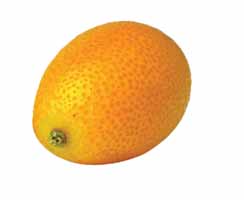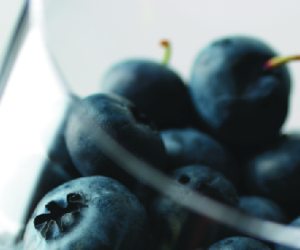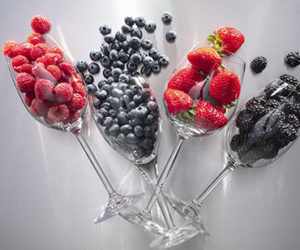 It had been a while since I had visited the Sunshine State. When I returned, it was still as warm and sunny as I had remembered growing up with in my youth. I was looking through a local visitor’s guide and decided to indulge in one of my favorite pastimes, wine tasting. What I found in the guide, however, was very unusual.
It had been a while since I had visited the Sunshine State. When I returned, it was still as warm and sunny as I had remembered growing up with in my youth. I was looking through a local visitor’s guide and decided to indulge in one of my favorite pastimes, wine tasting. What I found in the guide, however, was very unusual.
What I found was a tasting room at the Florida Orange Groves Inc. and Winery that offered citrus wines — wines made from oranges, key limes, tangerines and grapefruit. This was my first experience tasting citrus wines. These included such wines as Cocoa Beach (made with oranges and chocolate), Cracker Hammock Grapefruit (a sparkling citrus wine), Cracker Hammock Tangerine (another sparkling wine), Florida Grapefruit, Key Limen (key limes and grapefruit), Midnight Sun (orange and coffee), Orange Sunshine, Tangelo and Tangier (Tangerine). I sampled most of their wines. Each wine was deliciously sweet and each tasted unique.
I was so impressed by these unusual wines that I contacted the owner of the Florida Orange Groves Inc. and Winery, Vincent Shook, to see how they were made. Vincent could not share everything about this winemaking process, but he pointed me in the right direction to create some of my own citrus wines.
Citrus fruits — including oranges, tangerines, lemons, limes and grapefruits — come from citrus trees. Citrus trees grow to 15 to 50 feet (5–15 m) at maturity, sporting wide, evergreen leaves. The fruit on these trees are actually a type of berry called a hesperidium. Botanists place citrus trees in the family Rutaceae.
Most citrus trees do not respond well to prolonged exposure to freezing temperatures, and thus most live where frost is a rarity. In the United States, the main citrus growing regions are in the southern parts of Florida, Texas and California. In commercial orchards, most citrus is grown by grafting branches of a particular cultivar onto a tree trunk chosen for its hardiness.
During their early development, citrus fruits have a green rind. In the tropics, citrus fruits remain green, even when ripe. In cooler climates, their rinds change color as the green color — from chlorophyll — fades. (Incidentally, limes — if allowed to fully ripen in “cool” (non-tropical) conditions — will eventually turn yellow.) Most citrus fruits are picked green and ripen during shipping, in part due to treatment with ethylene.
In cooking, all parts of citrus fruits are used. The oil in citrus rinds is very aromatic and it — or the “zest” from the fruit — is used in many dishes, including marmalade. Likewise, bitter flavors deriving from the white, spongy layer (called the albedo) are used in some dishes. For example, the albedo from oranges provides the bitterness in cranberry relish. Of course, the juice of citrus fruits is widely prized and it is this what we — as winemakers — are interested in.
Much of the flavor in citrus fruits comes from citric acid and sugar, but citrus fruits also exhibit a relatively high concentration of glutamate, the “savory” amino acid. The aroma from the oils greatly influences the perceived flavor of citrus fruits. Here is a quick overview of some well-known citrus fruits:
(Citrus reticulata)
Satsumas and tangerines are part of the mandarin family of citrus trees. They are originally from Southeast Asia. Mandarin trees are smaller than orange trees and the fruit is also generally smaller than oranges as well. They also differ from oranges in that the peel is looser and can be more easily pulled from the flesh. These trees, which often have thorns on them, can reach about 25 feet (8 m) when they are mature.
Mandarins, along with citrons (Citrus medica) and pummelos (Citrus grandis), are thought to have given rise to most modern citrus fruits.
 (Citrus sinensis)
(Citrus sinensis)
Orange trees are originally from China and are thought to have arisen as a cross between a pummelo and a mandarin. They came to the United States by way of Europe. Columbus is credited for bringing the orange to America on his second voyage in 1493.
Orange trees can grow to about 22–30 feet (7–9 m) and the leaves on an orange tree can live for about 3 years.
Some popular cultivars are Parson Brown, Amber Sweet and Pineapple. Each cultivar can vary in the number of seeds it contains. Some cultivars such as the Hamlin and Valencia types are considered seedless. Oranges are the most popular citrus fruit, with more oranges grown commercially than all other citrus fruits combined.
The main subgroups of oranges are the common (or juice), navel, blood and acidless oranges. Sour oranges come from a different species (Citrus aurantium) than true oranges. Oranges contain an average of 11% sugar and 1.2% acid by fresh weight.
 (Citrus paradisi)
(Citrus paradisi)
Grapefruits, once called the forbidden fruit, originated in the Caribbean in the 18th Century as a hybrid between an orange and a pummelo. It is believed they were introduced to the United States in Safety Harbor, Florida by Count Odette Phillipe in 1823.
Grapefruit trees also reach a mature height of about 22–30 feet (7–9 m). They have cultivars that have about 50–60 seeds, such as the Duncan and Foster, to seedless varieties such as Marsh, Thompson, Burgundy, Red Blush, Flame and Ray Ruby.
Grapefruits are broken into two main types due to their flesh color. These two groups are the white, or pallid, group and the pink or red group. Red grapefruits arose in the 20th Century in Texas and Florida, via naturally-occurring mutations that in-creased the plant’s production of the pigment lycopene. In contrast, the new varieties Star Ruby and Rio Red were created by intentionally irradiating the fruit to cause mutations.
Grapefruits contain around 6% sugar and 2.0% acid by fresh weight.
 (Citrus limonum)
(Citrus limonum)
It is said that lemons come originally from India, possibly as a cross between a citron and a lime, followed by a cross of this hybrid to a pummelo. Like grapefruits, lemons made their way to America through Europe. Lemon trees are also thorny like other citrus trees. They can reach a height of about 20–30 feet (6–9 m) and the fruit can grow to as big as 41/2 inches (11 cm). Some varieties, such as the Armstrong, can be seedless.
Up to 5% of the weight of a lemon may be citric acid and the sugar content is around 3% by weight.
 (Citrus aurantifolia)
(Citrus aurantifolia)
These trees have large spines that grow on its branches. Lime plants are more like shrubs than the other members of the citrus family and they grow from 6 to 13 ft (2–4 m). Limes are originally from India or South East Asia. The fruit grows from 1–2 inches (2.5–5 cm) in diameter. Limes may contain up to 8% citric acid and average around 7% sugar by weight.
The larger Persian or Tahiti lime (Citrus latifolia) may be a hybrid between a citron and a (true) lime.
 (Fortunella margarita)
(Fortunella margarita)
Kumquats are sometimes grouped with citrus fruits and are believed to have come from China. The kumquat tree reaches a height of about 8–15 feet (2.4–4.5 m). There are some varieties that are seedless. Popular varieties of the Kumquat are Hong King, Marumi and Nagami. Kumquats are small, sweet (16% sugar) and are eaten whole.
Unless you live in the deep south, citrus trees do not grow well. You can try to grow dwarf varieties in pots indoors, however. They do require a lot of sunlight, though. Citrus trees can be grown from seed, but you will be waiting about 10 years for the tree to start producing fruit. You are better off buying a small plant from a nursery. These should yield fruit in a few years. A nice sunny spot with well-drained sandy loam is ideal.
Citrus trees need to be watered when the top 2 inches (5 cm) of the soil becomes dry. They do better with slow release fertilizers that contain micronutrients such as magnesium, boron, copper and zinc.
If you do have freeze damage, pruning the damaged areas is essential to prevent further damage to the tree and fruit. Some notable citrus diseases are citrus canker, melanose, greasy spot and sooty mold. Some insects that like to damage citrus trees are the citrus bud mite and citrus red mites.
One of the great things about citrus trees is the long harvesting season. In the case of the orange, the fruit can mature from October to March, depending on the variety. When properly stored, the fruit can last months without losing any quality. The best place to store them at home is in the crisper in your refrigerator.
When making citrus wines, follow the general procedures for making fruit wines (country wines). Most importantly, use only fresh fruit. If it is not good enough to eat, it should not be used in a wine. Add sugar so that you reach a projected alcohol level of around 9% ABV — wines with more alcohol than this will likely taste unpleasantly “hot.” Do not age these wines in oak or induce (or allow) a malolactic fermentation (MLF). A crisp acidity is what you are looking for.
Since you are starting with citrus fruits, adding acid should not be necessary. In fact, back sweetening the wine may be necessary to keep it from being too tart.
One of the fun things about citrus trees are all of the combinations of fruits such as the tangelo and the limequat. There are so many different varieties and combinations that you can try and experiment with when making citrus wines. Citrus wines are very compatible and can be easily blended in wonderful tropical concoctions.
Below are two recipes for two citrus wines. Either of these recipes can be made substituting another citrus fruit, you don’t have to use the variety specified in the recipe.
Makes 1 gallon (3.8 L) of wine
Ingredients
- 1 pint (~0.5 L) of freshly squeezed Satsuma or Tangerine orange juice
- 2 1/2 lbs. (1.1 kg) cane sugar
- 6 1/2 pints (3.1 L) water
- 1/2 tsp. pectic enzyme
- 1 tsp. yeast nutrient
- 1 Campden Tablet (crushed and dissolved)
- Chablis wine yeast
- fining agent (per manufacturers instructions)
You can juice the oranges with a juicer. Be sure not to get seeds or peel into the juice as this can make the wine bitter. Add water, nutrient and Campden tablet to the juice. Stir in and completely dissolve the sugar. Cover the juice and let it set for a day. After about 18–24 hours, dissolve the pectic enzyme per manufacturers instructions and let it set for another 12 hours. Add yeast and check your original gravity. Allow fermentation. You should reach about SG 1.010 or below when primary fermentation is complete. You may now add another Campden tablet if you wish. Rack the wine for secondary fermentation and allow it to ferment until dry. You will have to rack the wine once or twice during secondary fermentation. You may add a little water to bring the level back to a gallon. You may also want to add a stabilizer and a clarifier. Allow it to age 4–6 months before you bottle it. You may want to sweeten it to taste before bottling. If you do, add 1/2 teaspoon of potassium sorbate to prevent fermentation from starting again. You may bottle and age for at least 6 months.
Makes 1 gallon (3.8 L) of wine
Ingredients
- 6 large grapefruit
- 3 lbs. (1.4 kg) cane sugar
- water (enough to make the final wine volume equal 1 gallon)
- 1/2 tsp. pectic enzyme
- 1/8 tsp. tannin
- 1 crushed Campden Tablet
- fining agent
- wine yeast (such as Sauternes)
- 1/2 tsp. potassium sorbate
Juice all of the grapefruits. This can be done by hand or in a juicer. Be sure not to get any seeds in the juice. Save a cleaned peel and juiced pulp from one of the grapefruit. Clean out the pith from the inside of the peel and add it to the juice along with half of the sugar, the Campden tablet, tannin, yeast nutrient, and water to make one gallon (3.8 L) of juice.
Dissolve the sugar well in the mixture by stirring. Add the pulp making sure there is not pith or seeds on it. These can add bitterness and off flavors to the wine.
Allow the juice to sit 12–18 hours covered. Add the pectic enzyme per manufacturers instructions. Allow the juice to sit for at least 12 more hours and then add the yeast. After 2 days of fermentation, add the remaining sugar and dissolve it well. Allow another 4–5 days of fermentation.
After this, strain out the peel and pulp through a strainer and rack into secondary fermenter. Rack regularly and ferment for another 6 months. You may add water to bring it back to a gallon of wine. Likewise, you may use a fining agent and stabilizer at this time. You sweeten it by adding a half cup of sugar to boiled water. You must add potassium sorbate at this time to stabilize the wine and prevent refermentation. Bottle and allow to age at least 6 months.
As with most whites and fruit wines, citrus wines should be served chilled. A slice of the appropriate fruit as garnish — perhaps with the rind squeezed slightly to release the aroma of the oils — would be a nice touch.
Pair citrus wines with seafood, especially lobster. They are also good with pork because of its high acid content. The grapefruit dessert wine goes well with dishes with sauces or gravy.


 (Citrus paradisi)
(Citrus paradisi) (Citrus limonum)
(Citrus limonum) (Citrus aurantifolia)
(Citrus aurantifolia) (Fortunella margarita)
(Fortunella margarita)




